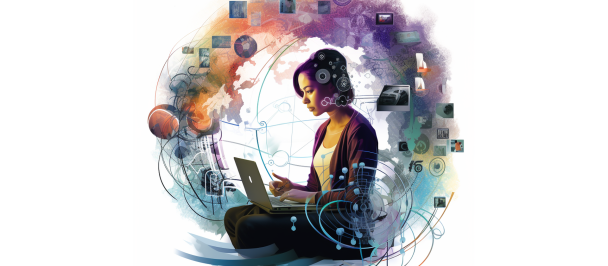With only a decade of action left for the sustainable development agenda, UNDP is looking beyond business as usual, to find new ways to learn from the margins, and to look into radically new approaches that fit the complexity of development challenges.
One of those new approaches is learning from women and men who have solved problems through ingenuity and simple, frugal means.
People such as Made Kusuma, an environmental health graduate from Bali, who was frustrated by the numerous floods caused by the lack of a waste management system in his community. Drawing inspiration from nature, he found black soldier flies to process organic waste, which also serves as livestock feed. Or Omar Vazquez, who developed “Sargablocks,” a building block made from seaweed and organic materials, now being used to build homes across the Riviera Maya in Mexico.
Grassroots innovations have often never been codified, applied elsewhere, nor expanded upon. They are naturally frugal, and grounded in a specific context.
We are working on a hypothesis that gave Made Kusuma, Omar Vazquez, and many other grassroots innovators an important role to help national partners achieve the Sustainable Development Goals. How can a large international organization such as UNDP begin to mainstream what happens in the margins?
The two most common ways are through local innovation challenges or by identifying existing user-led innovations. Different experiments compared both approaches and concluded that user-led innovations are higher in quality, feasibility and social impact.
And unlike the solutions that emerged from the innovation challenges, they are more relevant, and produce more novel ideas.
So, we are asking ourselves: Do we know who these grassroots innovators are? How many are they? What answers are they coming up with? Often, they remain invisible.
Placing an educated bet on grassroots innovations, the UNDP Accelerator Labs is conducting an experiment. Working with 92 labs in 116 countries, the network is tapping into the distributed knowledge, perceptions, and practices of women and men facing the effects of climate change, who live in poverty, and who can contribute to putting the planet on a more sustainable path.
We brought onboard 92 solutions mappers, now embedded inside the organization.
Solutions mapping means finding things that work and expanding on them. It seeks out local assets and identifies positive deviants, women and men whose have found better ways to solve a problem, despite facing similar challenges and having no extra resources.
“To be a mapper in the UNDP Accelerator Lab network is to be part of a community of brilliant development practitioners who are constantly pushing the edge of development fieldwork. We are trying new approaches, tools, and sharing knowledge and solutions found in our countries,” says Basma Saeed, Head of Solutions Mapping, UNDP Accelerator Lab Sudan
This blog is part of a series to reflect on why we approach innovations from the bottom-up.
Grassroots innovations tend to be frugal, using local materials, and designed by and for the community. They can take different forms from furniture-recycling, reducing the drudgery of manual labour, turning waste plastic into value by mixing it with sand or sawdust, and pedaling to provide wireless access, to name a few.
We are running an experiment based on the assumption that people living closest to the problem are best equipped to come up with the answer.
Most grassroots innovations seem to be designed to solve many problems. Omar Vazquez’s bricks made out of seaweed are helping solve a climate crisis while also improving the community’s economic stability. This multifunctionality is a key feature of why grassroots innovations matter to the Sustainable Development Goals — as we cannot achieve them separately or individually.
“If you provide universal education and provide clean water, you still need to achieve gender equality, reduce inequalities, and eliminate poverty. These goals are much more interconnected. You can’t treat them as individual targets,” says Gina Lucarelli, Team Leader, UNDP Accelerator Labs
We recognize people living close to the problem have critical knowledge to learn from.
“Innovations don’t just happen in shiny labs and Silicon Valley and all that. At UNDP Accelerator Labs, we recognize that innovation occurs all around us, in villages and farming communities, to name a few,” says Fatima Farouta, Head of Solutions Mapping, UNDP Ghana Accelerator Lab
Policymakers and development experts make crucial decisions that affect many lives, but this top-down approach can often miss. User-led innovation usually address issues and challenges from a perspective that favours experience.
Professor Anil Gupta, Founder of the Honeybee Network, teaches and lives the maxim that every grassroots innovation is also an indicator of an unmet need. By mapping grassroots initiatives, we can then inform UNDP programmes, such as this innovation from UNDP Philippines; a WIFI vending machine made from repurposed electronic appliances that give five minutes of internet access by inserting a piso coin.
Eric Von Hippel, the creator of the term user-led innovation, says informal innovation is a feature, not a bug. He sees that breakthroughs in human history, such as the Industrial Revolution, were linked to a series of small improvements. By systematically identifying and helping diffuse grassroots innovations, the net effect on economic wellbeing can be very large.
We’re embedding solutions mapping into our lab network. We’ve launched for Tomorrow, a global initiative for grassroots solutions in partnership with Hyundai Motor Company. The for Tomorrow platform is dedicated to celebrate and accelerate grassroots innovation, connect local innovators who are creating a more sustainable future.
We’re working along with agencies such as UNICEF and UNHCR to expand frugal innovations. If you are working on similar areas, know of grassroots innovations and local innovators in your communities, or have an idea for collaboration, let’s connect.
Our journey has begun, but there is more to be done. In the next part of this series, we will reflect on how the labs are applying solutions mapping, showcase what we are learning, and share the different pathways to value of this exercise. Stay tuned as we continue to share our learnings and (mis)adventures on approaching innovation from the bottom-up.
In the meantime, watch the recap of UNGA75 SDG Action Zone.
Get in touch and join our conversations online.
UNDP Accelerator Labs Network @UNDPAcclabs

 Locations
Locations

